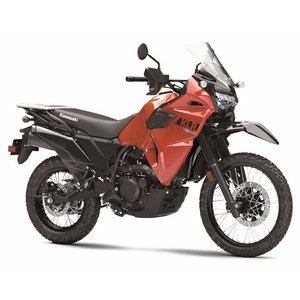2022 Kawasaki KLR 650 Review: The Swiss Army Knife of Dual-Sport Motorcycles
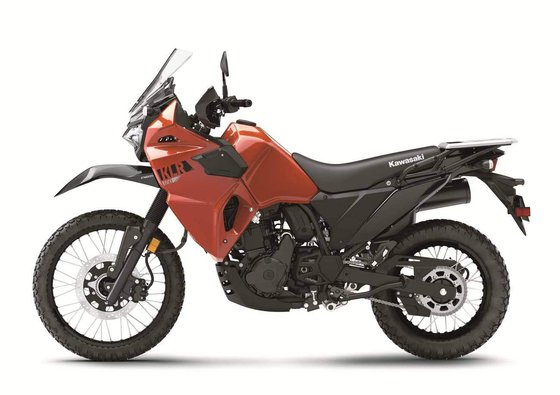
Introduction
The Kawasaki KLR 650 needs no introduction for adventure enthusiasts. Since its debut in the 1980s, this iconic dual-sport motorcycle has carved a reputation as a rugged, go-anywhere workhorse. The 2022 model year marks a significant refresh for the KLR lineup, bringing modern updates while staying true to its utilitarian roots. After spending a week with the 2022 KLR 650 Adventure variant, it’s clear Kawasaki has struck a balance between evolution and tradition – creating a machine that feels both familiar and refreshingly capable.
Whether you’re navigating city traffic, carving backroads, or tackling gravel trails, the KLR 650 wears its "do-it-all" personality like a well-broken-in leather jacket. Let’s dive into what makes this generation stand out.
Design & Ergonomics: Built for the Long Haul
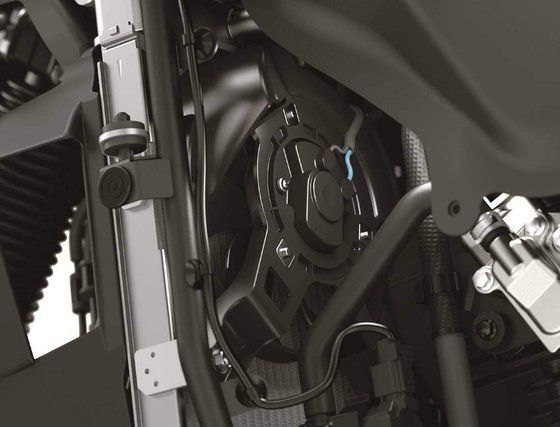
Climbing onto the KLR 650, the first thing you notice is its commanding yet accessible stance. The 34.3-inch (871 mm) seat height might intimidate shorter riders at first glance, but the narrow seat profile and well-placed footpegs make it manageable. Kawasaki’s ergonomic updates for 2022 – including rubber-mounted handlebars and footpegs moved 10mm outward – pay dividends during long rides. The vibrations that plagued older models have been significantly tamed, leaving your hands and feet grateful after hours in the saddle.
The new adjustable windscreen is a game-changer. In its highest position, it deflects windblast effectively for a 6-foot rider, though buffeting becomes noticeable above 70 mph (113 km/h). The two-position adjustability (achieved via simple bolt adjustments) lets you optimize airflow for helmet visor clarity – a thoughtful touch for riders swapping between highway cruising and technical off-road sections.
Kawasaki’s focus on practicality shines through details like: - Redesigned fuel tank: Same 6.1-gallon (23L) capacity but with improved fuel pickup, letting you drain every last drop - Reinforced rear subframe: Rated for 4.4 lbs (2 kg) more luggage capacity than previous generations - Accessory-ready architecture: Pre-wired harnesses and mounting points for aux lights, USB ports, and more
The Adventure trim we tested came equipped with factory-installed side cases (35L each), engine guards, and LED auxiliary lights – transforming it into a turnkey touring machine. While the cases aren’t waterproof, their top-opening design proved convenient during fuel stops.
Engine & Performance: Single-Cylinder Soul
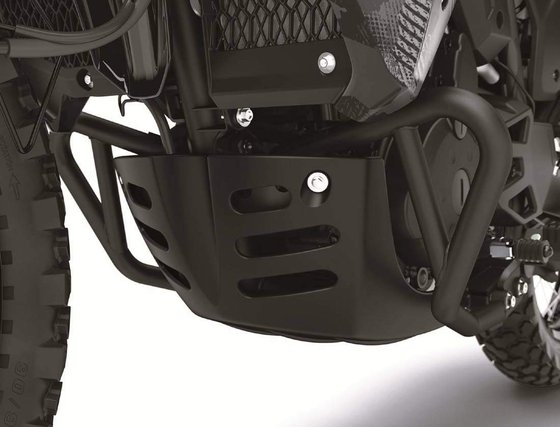
At the heart beats Kawasaki’s updated 652cc liquid-cooled single, now sporting fuel injection – a first for the KLR lineage. The switch from carburetion brings tangible benefits: crisp cold starts, altitude compensation, and smoother throttle response. With 39.1 lb-ft (53 Nm) of torque peaking at 4,500 RPM, this isn’t a fire-breathing monster – and that’s precisely the point.
The engine character is agricultural in the best possible way. There’s enough grunt to loft the front wheel over trail obstacles, yet it remains vibration-damped enough for highway cruising. Fifth gear sees 70 mph (113 km/h) sitting at ~4,800 RPM – not exactly relaxed, but the rubber-mounted components keep fatigue at bay. Kawasaki’s focus on midrange pays off when loaded with gear; the bike pulls strongly from 3,000 RPM without needing constant gear swaps.
Key mechanical updates include: - Revised cam profiles: Smoother power delivery between 3,000-5,000 RPM - Lighter starter & battery: Quicker cranking, especially in cold weather - O2 sensor-equipped exhaust: Maintains optimal AFR for emissions compliance
The 5-speed transmission remains a curious choice in a 6-speed world. While adequate for most scenarios, highway overtakes require planning – you’ll regularly use the entire tachometer range. Clutch action is surprisingly light for a 651cc single, thanks to Kawasaki’s switch to thrust-needle bearings.
On-Road Manners: Better Than It Should Be
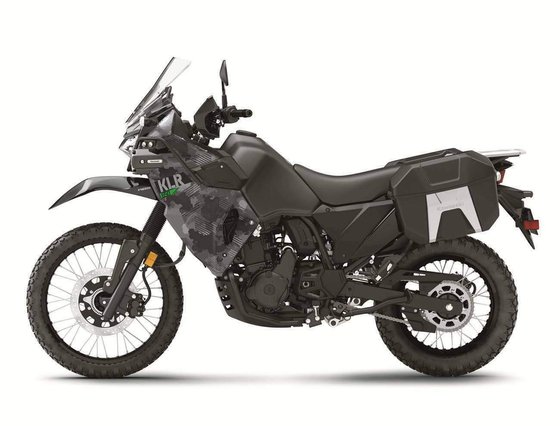
With its 21-inch front wheel and long-travel suspension, the KLR 650 defies expectations on pavement. The 41mm telescopic fork and Uni-Trak rear shock (with 7.9”/200mm and 7.3”/185mm travel respectively) are tuned for compliance rather than sportiness. Yet on twisty backroads, the KLR carves corners with a planted confidence that belies its off-road intentions.
The secret lies in the revised chassis geometry: - 30-degree rake with 4.8” (122mm) trail - 58.3” (1,480mm) wheelbase - 8.3” (210mm) ground clearance
These numbers translate to stable straight-line manners and predictable turn-in. Push hard into a corner, and the Dunlop K750 tires (90/90-21 front, 130/80-17 rear) communicate clearly through the bars. Braking performance from the 300mm front disc (with optional ABS) inspires confidence, though the rear 240mm rotor feels wooden until you adapt to its progressive bite.
Off-Road Prowess: Where the KLR Earns Its Keep
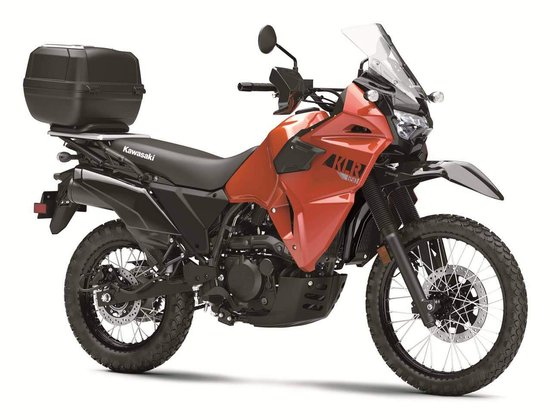
Switch to dirt, and the KLR transforms into a surprisingly competent trail partner. The 456 lb (207 kg) wet weight is noticeable in technical terrain, but the low center of gravity helps manage heft. Standing on the pegs reveals well-judged handlebar placement – slightly rearward for easy weight shifts over obstacles.
Suspension shines here. The front fork eats up washboard ruts without harshness, while the rear shock’s 5-way preload adjustment handles everything from solo riding to fully loaded touring. At speed through whoops, the chassis stays composed, though faster riders might crave more damping control.
The real off-road limitation is ground clearance. While 8.3” (210mm) suffices for mild trails, aggressive rock gardens or deep ruts will have you scraping the skid plate. An aftermarket upgrade (available at MOTOPARTS.store) adds 1.2” (30mm) of protection – a wise investment for serious adventurers.
Technology & Features: Modern Touches
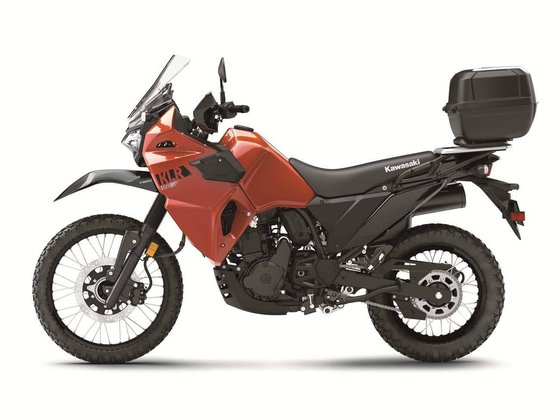
Kawasaki’s digital dash is a welcome upgrade from previous analog units. The LCD display provides: - Speedometer (mph/km/h toggleable) - Dual trip meters - Fuel gauge with 12-segment indicator - Clock - Gear position indicator
While not as flashy as TFT displays, it’s legible in direct sunlight – crucial for adventure riding. The LED headlight deserves special praise, casting a broad, white beam that makes night riding viable. Adventure models add fog-style aux lights that brilliantly illuminate roadside hazards.
Competition: How the KLR Stacks Up
The middleweight adventure segment is fiercely contested. Here’s how the KLR 650 fares against key rivals:
1. Suzuki DR650S
- Pros: 26 lb (12 kg) lighter, lower seat height, air-cooled simplicity
- Cons: No fuel injection, smaller fuel tank (3.4 gal/13L), dated styling
Verdict: Better for pure off-road use; KLR dominates touring
2. Honda XR650L
- Pros: Legendary reliability, 6-speed transmission
- Cons: Carbureted, minimal wind protection, no ABS option
Verdict: KLR offers better road manners and tech
3. Yamaha Tenere 700
- Pros: 72 hp parallel-twin, premium suspension, 200 lb (91 kg) lighter
- Cons: $3K+ pricier, less aftermarket support
Verdict: Tenere is more capable off-road; KLR wins on value & comfort
The KLR’s ace card remains its versatility. Few bikes can match its blend of 400-mile (644 km) range, genuine off-road capability, and sub-$8K pricing (when new).
Maintenance: Keeping Your KLR Thriving
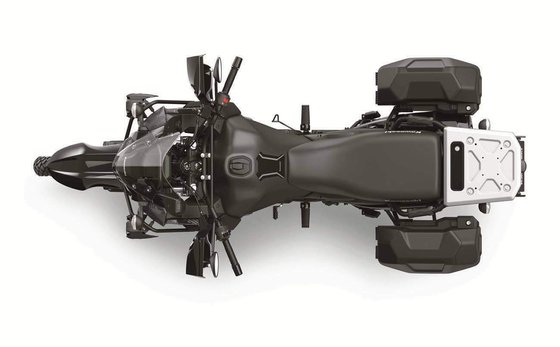
The KLR’s reputation for reliability is well-earned, but proper care ensures longevity:
1. Oil Changes
- Use JASO MA2-certified 10W-40 (2.6 qt/2.5L capacity)
- Change every 3,700 miles (6,000 km) – sooner for heavy off-road use
2. Chain Maintenance
- O-ring chain requires regular cleaning and lubrication
- MOTOPARTS.store recommends DID 520VX2 chains for extended life
3. Valve Adjustments
- Check every 15,000 miles (24,000 km)
- Shim-under-bucket design requires mechanical aptitude
4. Coolant System
- Replace every 2 years/16,000 miles (25,750 km)
- Use ethylene glycol-based coolant meeting JIS K2234
5. Air Filter
- Clean foam filter every 1,200 miles (1,930 km) in dusty conditions
- Consider Twin Air’s oiled cotton replacement for better airflow
6. Tire Pressures
- 22 PSI (1.5 bar) front / 29 PSI (2 bar) rear for street
- Drop to 18 PSI (1.24 bar) front / 22 PSI (1.5 bar) rear for off-road
Pro Tip: Install a magnetic oil drain plug (available at MOTOPARTS.store) to catch metal particulates during oil changes.
Conclusion: The Everyperson’s Adventure Bike
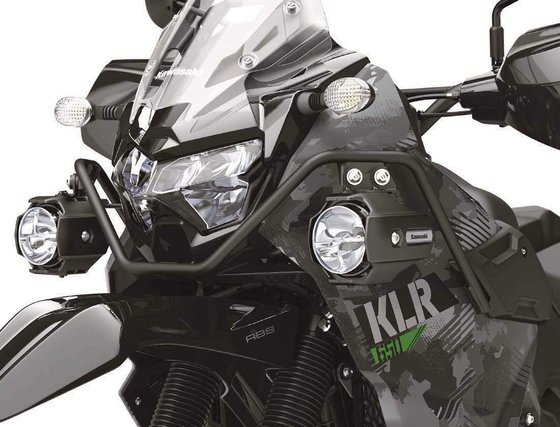
The 2022 Kawasaki KLR 650 isn’t about being the fastest, lightest, or most technologically advanced. It’s about being enough – enough power for highways, enough suspension for trails, enough comfort for continents. Kawasaki has preserved the model’s soul while addressing its historical weaknesses, resulting in a motorcycle that feels both nostalgic and relevant.
For riders seeking a trustworthy companion that shrugs at pavement endings, the KLR remains a compelling choice. Its aftermarket support is second to none, letting owners tailor the bike to their needs – whether that’s adding crash bars, upgrading suspension, or installing auxiliary fuel tanks.
In a world of increasingly specialized motorcycles, the KLR 650’s jack-of-all-trades ethos feels refreshingly authentic. It’s not perfect, but its imperfections have character – and isn’t that what adventure is all about?
Looking to enhance your KLR 650? Explore MOTOPARTS.store’s curated selection of adventure-ready upgrades, from skid plates to luggage systems. Our experts are standing by to help you build the ultimate KLR.

Specifications sheet
| Engine | |
|---|---|
| Stroke: | Four-stroke |
| Max power: | 29 kW | 39.0 hp |
| Max torque: | 52 Nm |
| Fuel system: | DFI with 40mm Throttle Body |
| Max power @: | 6000 rpm |
| Displacement: | 652 ccm |
| Fuel control: | DOHC |
| Max torque @: | 4500 rpm |
| Configuration: | Single |
| Cooling system: | Liquid |
| Compression ratio: | 9.8:1 |
| Number of cylinders: | 1 |
| Dimensions | |
|---|---|
| Wheelbase: | 1540 mm (60.6 in) |
| Wet weight: | 207 |
| Seat height: | 871 mm (34.3 in) |
| Overall width: | 970 mm (38.2 in) |
| Overall height: | 1466 mm (57.7 in) |
| Overall length: | 2281 mm (89.8 in) |
| Ground clearance: | 211 mm (8.3 in) |
| Fuel tank capacity: | 23 L (6.1 US gal) |
| Drivetrain | |
|---|---|
| Final drive: | chain |
| Chain length: | 106 |
| Transmission: | 5-speed |
| Rear sprocket: | 43 |
| Front sprocket: | 15 |
| Maintenance | |
|---|---|
| Rear tire: | 130/80-17 |
| Sprockets: | 15/43 (front/rear) |
| Engine oil: | 10W40 |
| Front tire: | 90/90-21 |
| Brake fluid: | DOT 4 |
| Spark plugs: | NGK DPR8EA-9, NGK DPR8EIX-9 |
| Coolant capacity: | 1.0 |
| Engine oil capacity: | 2.5 |
| Engine oil change interval: | Every 5000 km or 2 years |
| Recommended tire pressure (rear): | 2.0 bar (29 psi) |
| Recommended tire pressure (front): | 1.5 bar (22 psi) |
| Additional Notes | |
|---|---|
| Special editions: | Adventure (221 kg wet weight) and Traveler (214 kg wet weight) include factory accessories |
| ABS weight impact: | ABS adds 2 kg (207 kg non-ABS, 209 kg ABS) |
| Chassis and Suspension | |
|---|---|
| Rake: | 30.0° |
| Frame: | Tubular, semi-double cradle |
| Trail: | 122 mm (4.8 in) |
| Rear brakes: | Single 240 mm disc, 1-piston caliper (ABS optional) |
| Front brakes: | Single 300 mm disc, 2-piston calipers (ABS optional) |
| Rear suspension: | Uni-Trak gas-charged shock, adjustable rebound damping and spring preload, 185 mm travel |
| Front suspension: | 41mm telescopic fork, 200 mm travel |
| Rear wheel travel: | 185 mm (7.3 in) |
| Front wheel travel: | 200 mm (7.9 in) |



